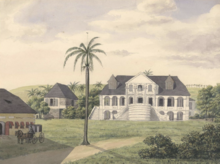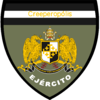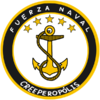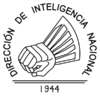Hraunborg War
| Hraunborg War | |||||||||
|---|---|---|---|---|---|---|---|---|---|
 The Second Battle of Fort Hraunborg (1840) | |||||||||
| |||||||||
| Belligerents | |||||||||
|
| Western Hemisphere Trade Company | ||||||||
| Commanders and leaders | |||||||||
| Strength | |||||||||
|
| ||||||||
| Casualties and losses | |||||||||
|
| ||||||||
| 18 civilians killed | |||||||||
The Hraunborg War (Creeperian Spanish: Guerra de Harunburgo; Reykani: Hraunborgarstríð) was fought by Creeperopolis and the Reykani Western Hemisphere Trade Company between 1670 and 1671 resulting in the company ceding the trade port of Fort Hraunborg to Creeperopolis.
Background
In 1557, Creeperian King Alfonso III sold a portion of the city Coruña and ceded it to the Reykani Western Hemisphere Trade Company (VVJ). Alfonso III sought money to help solidify his rule shortly after his ascension to the throne to suppress nobles loyal to the assassinated King Miguel V, while the VVJ wanted to establish a trade outpost to export sugar cane from Creeperopolis.
The land purchased by the Reykani company was established as Fort Hraunborg as a trade outpost of the larger Reykani overseas colonies. Further inland, Reykanes purchased lands to build a sugar cane plantation further inland in Las'Pilas, however, the lands were not ceded to Reykanes. As the land remained Creeperian territory, the VVJ had to pay taxes to the Creeperian government, and as the VVJ was a foreign company, it paid a higher tax rate that other Creeperian companies.
Prelude
VVJ illegal taxation practices
In 1667, the Creeperian parliament led by Prime Minister José Moreno Dávalos implemented a new tax law which increased the amount of taxes the VVJ had to pay to the Creeperian government for its usage of the land in Las'Pilas. In 1668, to recuperate the lost revenue to the new tax law, the Las'Pilas plantation began to tax the Creeperans living in Las'Pilas. The VVJ's illegal taxation practices went unreported for several months until mid-1669 when the town's mayor reported the illegal taxation to the San Romero departmental government, which ten informed the national government.
After learning of the illegal taxation practices being done by the VVJ, the parliament ordered the company to cease taxing the people of Las'Pilas, but the company ignored the parliament's order. On 2 September 1669, the parliament passed a law to further increase taxes on the VVJ which only resulted in the company collecting more illegal taxes from Las'Pilas. In October 1669, the VVJ arrested a resident of Las'Pilas for failing to pay taxes to the VVJ which resulted in a standoff between the local police force and the plantation's security force. After a few hours, the police negotiated the resident's release in exchange for paying the tax the resident owed the plantation.
The October 1669 incident resulted in nationwide discontent with the Liberal Party (PL) which seemed to be unable to resolve the issue with the VVJ's illegal taxation practices, and to take advantage of the growing discontent with the Liberal Party, the Conservative Party (PC) began to promise ahead of the 1670 general election to resolve the situation with the VVJ within two years. In the 1670 general election, the Conservatives retook control of the parliament for the first time since 1600.
Arrest of sugar plantation owners
On 9 March 1670, the day after after taking office as prime minister, Alexander Carpio Maroto ordered the arrests of the VVJ's Freymann Marrason, the plantation's owner, and other plantation administrators in Las'Pilas. General Reinar Williamsson, the administrator of Fort Hraunborg, condemned the arrests and demanded their plantation administrators' immediate release. Carpio Maroto responded to Williamsson demanding that the VVJ cease its illegal taxation practices in Las'Pilas in exchange for releasing the plantation administrators. Williamsson responded by stating that the VVJ would only cease its illegal taxation practices if the new taxation law implemented in 1667 was revoked, but Carpio Maroto told Williamsson that the law would remain in place so that the government could recuperate the tax revenue lost to the VVJ.
In late-March 1670, Williamsson informed the Creeperian government that it would communicate with the Reykani government to resolve the situation, but the Creeperian government refused and told Williamsson that the dispute was between Creeperopolis and the VVJ and that the Reykani government would not need to be consulted. Regardless, Williamsson told the crew of a trade ship leaving Fort Hraunborg to inform the Reykani government of the ongoing situation and to determine what to do next.
Course of war
Declaration of war
On 2 April 1670, a Creeperian was murdered within Fort Hraunborg. Although no perpetrator was identified, the Creeperian government accused the Fort Hraunborg administration of committing the murder in retaliation for arresting the sugar plantation administrators. Williamsson rejected the Creeperian accusations and demanded an apology. The following day, Carpio Maroto presented a law to parliament to formally declare war on the VVJ. The law passed with support from the Conservative majority while the Liberal minority abstained to vote, and at 3:00 p.m. that afternoon, 5,000 Creeperian soldiers under the command of Brigadier José Yagüe Monterrosa marched towards Fort Hraunborg from Puerto Francisco to militarily occupy the Reykani trade outpost.
First Battle of Fort Hraunborg
Creeperian and Reykani forces clashed just outside of Fort Hraunborg on 3 April 1670. As Fort Hraunborg was fortified and had a garrison of around 1,200 soldiers, the Creeperans were unable to simply capture the outpost unopposed. After several hours of fighting, the Creeperans had only managed to capture the town outside of the fort itself and the infrastructure in and out of the town. Yagüe Monterrosa ordered his soldiers to halt the attack and to being preparations for a siege.
Yagüe Monterrosa sent a request to the Creeperian Navy to initiate a naval blockade of Fort Hraunborg to prevent any ships from entering or leaving the fort. On 4 April 1670, the navy mobilized two warships from Puerto Francisco to participate in the naval blockade of the fort. The two ships were later joined by ten more warships which arrived from Salvador on 11 April 1670. The blockading warships were commanded by Rear Admiral Nicolás Durán Sánchez who ordered his warships to capture or sink any Reykani ship which attempted to enter or leave the port.
Second Battle of Fort Hraunborg
The ship which departed Creeperopolis for Reykanes in mid-March 1670 arrived in Hafnir in October 1670. The ship's crew told the VVJ's administrators about the ongoing situation occurring at Fort Hraunborg and that Williamsson asked for help resolving the situation. Bergur Haukvaldsson, the owner of the Western Hemisphere Trade Company, ordered the preparation of three warships to be sent to Fort Hraunborg as he feared that in the six months since they ships left the fort, the Creeperian army had already attacked or captured the fort. After two weeks of preparation, three VVJ warships commanded by Captain Loðmundur Ísbjörnsson left Hafnir with 600 sailors to help the outpost.
The three warships arrived at Fort Hraunborg on 24 March 1671 and encountered the Creeperian blockading warships. The Creeperian warships saw the Reykani warships and engaged in battle. In the succeeding battle, one of the Reykani warships was sunk while the other two were damaged and surrendered to the Creeperian blockade. One Creeperian warship was sunk and three more were damaged. Ísbjörnsson and around 400 Reykani sailors were taken as prisoners of war by the Creeperans.
At the same time as the naval battle, the Creeperian forces besieging the city were ordered by Yagüe Monterrosa to attack the fort. The Creeperans intended to catch the Reykanians off guard while the relieving ships were being attacked by the blockade. The Reykani forces were able to respond to the Creeperian attack, and eventually, Yagüe Monterrosa ordered his soldiers to abandon the attack and continue the siege.
Third Battle of Fort Hraunborg
On 9 April 1671, Yagüe Monterrosa ordered a third and final attack of Fort Hraunborg with direct support from the blockading warships. After several hours of fighting, the Creeperans were able to break through the fort's western wall and began to storm inside. Shortly after the western wall fell, the northern wall also fell and Creeperian soldiers now entered the fort through two breaches. Twenty minutes after the walls were breached, Williamsson surrendered the Fort Hraunborg to Yagüe Monterrosa. Creeperian soldiers occupied the fort and around 1,050 Reykani soldiers were taken as prisoners.
Aftermath
Casualties
In total, around 830 people were killed and around 850 more were wounded during the war. Of the casualties, VVJ lost around 350 soldiers and a further 300 were wounded, meanwhile, over 460 Creeperans were killed and over 550 more were wounded. Additionally, 18 civilians were killed during the First Battle of Fort Hraunborg. One VVJ warship was sunk and two more were damaged and captured by the Creeperian Navy; one Creeperian warship was sunk and three more were damaged. Around 1,450 Reykani soldiers were captured during the war.
Treaty of Salvador
On 26 April 1671, five Creeperian warships commanded by Durán Sánchez sailed to Reykanes to demand a peace treaty and the ceding of Fort Hraunborg to Creeperopolis. The warships took Marrason, Williamsson, and Ísbjörnsson as prisoners to Reykanes to verify to the Reykani government and the VVJ that the Reykani soldiers at Fort Hraunborg and the three warships sent to the outpost were indeed defeated by the Creeperans.
The Creeperian warships arrived in Hafnir on 29 September 1671.






